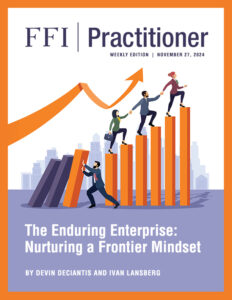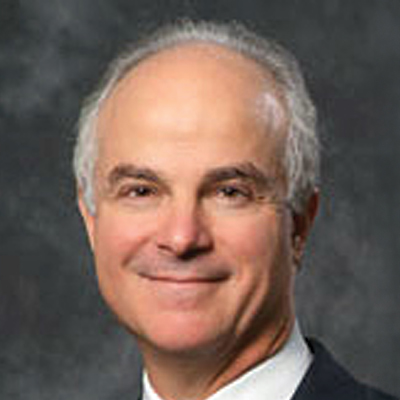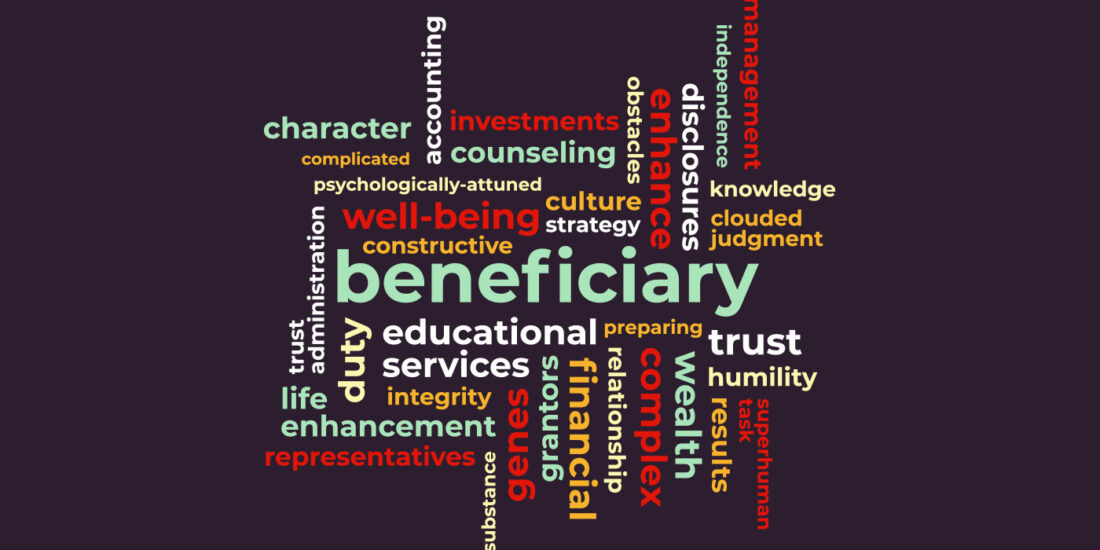
View this edition in our enhanced digital edition format with supporting visual insight and information.
Thank you to the authors of this week’s FFI Practitioner, Devin DeCiantis and Ivan Lansberg, for this article discussing the strategies that enterprising families in emerging and frontier economies deploy to navigate unpredictable environments. This article is based on a more extensive exploration of the topic as addressed in the authors’ new book The Enduring Enterprise: How Family Businesses Thrive in Turbulent Conditions.
Over the last decade, we’ve been studying how families around the world have built enduring enterprises that stand the tests of time within some extremely volatile contexts. Based on this research, our new book The Enduring Enterprise: How Family Businesses Thrive in Turbulent Conditions introduces a counterintuitive notion—that leading companies in the most advanced economies, which many consider the gold standard for organizational excellence, have much to learn about survival and success from family-owned companies operating on the frontiers of capitalism in emerging and frontier economies.
Five central ideas inform this thesis. First, exposure to chronic volatility and uncertainty can boost organizational ingenuity, adaptability, and resilience. Second, in these highly volatile environments, owners leverage family relationships and networks to build microclimates of trust which help to sustain their entrepreneurial activity. Third, enterprising families that have endured these strains and stresses for generations have developed a portfolio of stabilizing strategies for navigating crises with greater skill and confidence. Fourth, organizations everywhere can enhance their performance under these conditions if they engage proactively in managing risk, a systematic approach that will increasingly become a vital function for leaders no matter where they are located. Fifth, whenever polycrisis has threatened the prevailing world order, a New Age of Uncertainty begins, and sustained periods of turbulence inevitably follow.
This last point is particularly salient, since external risks are often the triggers that set protracted crises in motion, from political assassinations to speculative bubbles to revolutions against dynastic elites. In each case, the catalyst is different, but the outcome is the same—a renegotiation of the social contract between private citizens, private enterprises, and public authorities that can dramatically alter the conditions for commercial survival and success.
We have identified five such disruptive megatrends—revolutionary technologies, demographic changes, social tensions, market failures, and climate change—that will likely affect all enterprising families around the world in one way or another in the years and decades ahead. Each is its own gray rhino,1 slow-moving in pace but far-reaching in impact. Ominously, all five now seem to be gathering simultaneously on the horizon for the first time in nearly a century.
We believe surviving and thriving in the face of these existential threats will require a radically different approach to organizational structure, strategic planning, and governance than is taught in most Western business schools and practiced in most Western boardrooms. Instead, the members of many enterprising families that have succeeded on the frontiers of capitalism deploy a portfolio of strategies like “redundancy” and “modularity” that allow them to endure frequent shocks and disruptions. They may also tell inspirational stories about how they have overcome such adversity countless times throughout their history, helping these systems navigate through virtually any crisis with greater confidence.
One of our favorites was shared by a founder who took his five children on a fishing trip to a beautiful but remote island in the Gulf of Mexico. The day after they arrived and set up their camp, the weather turned and a furious storm rolled in, with hurricane-force winds. Realizing that the barren island offered no shelter, the father looked for the biggest tree he could spot and tethered himself and the children to it. After a terrifying night, they returned home the next day, traumatized but unharmed. The image of the children and their father tied to a tree in an unrelenting storm left an indelible impression and remains part of the family’s lore three generations later. It has become a lesson on the importance of familial interdependence in the face of adversity.
According to Dr. Froma Walsh, one of the leading authorities on family resilience, such family belief systems are a cornerstone in collective well-being. She argues that “we cope with crisis and prolonged adversity by making meaning of our experience: linking it to our social world, to our cultural and spiritual beliefs, to our multigenerational past, and to our hopes and dreams for the future.”2
Yet, in the fog of war, natural disaster, or economic turmoil, families often neglect to articulate and share a common narrative. The purpose of what they are doing and why it matters recedes to the background. This omission weakens their ability to make meaning out of their shared experience, and inadvertently compromises the family’s resilience. Importantly, according to Walsh, the most productive of these narratives stress a relational view of resilience, rather than one of self-reliance and rugged individualism. To evoke Rudyard Kipling in The Jungle Book, this further reinforces the strategic logic of modularity and symbiosis—that “the strength of the Pack is the Wolf, and the strength of the Wolf is the Pack.”3
Such narratives help to contextualize adversity, framing it as a common threat that the family can tackle if it can effectively harness collaboration and demonstrate grit. They provide hope and a sense of control over the family’s shared destiny—feelings that otherwise can be elusive in these environments. In the absence of these guiding principles, the external stresses that families naturally experience can easily aggravate internal conflicts.
When we worked with a family at the peak of the civil war in El Salvador, we observed this dynamic in action firsthand. As these conflicts inevitably bubbled up, it was useful for us to remind the family members that they were operating in an extremely fluid and hostile environment. After a while it dawned on them that their internal conflicts were a direct by‑product of their external environment. As one of them commented, “We fight with each other because, in this volatile situation, family is the one thing we can control.” Redirecting anxiety into more constructive efforts—such as investing in the stabilizing strategies—first requires acknowledging that the source of stress and internal conflict is at least partly external.
But even shared stories and open communication can only help so much. Recognizing these limits, many families build in time for collective shore leave—strategic investments to get away from the front lines and decompress in more stable environments. This unique form of seasonal migration allows family members to recharge their emotional batteries—essential for sustaining collective resilience over the long term.
Practically all of the successful families we know in emerging and frontier economies have secondary homes in more stable jurisdictions such as New York, Miami, Dubai, London, or Singapore. These cities offer them the unique opportunity to spend time away from the pressures of the frontiers, in blissful anonymity, engaged in precisely the type of joyful play and connection that Walsh highlighted as essential for nurturing greater individual and collective resilience.
Then, at some point, these family members must inevitably return to the front lines. When they do, the grim realities of landing back home are difficult to ignore. Feelings of anxiety and personal insecurity quickly return. Many who live and work further down on the hierarchy of stability have been victims of kidnappings, break-ins, and personal assaults. They often live in family compounds or walled communities protected by their own private security teams. Some families have described this experience to us as living in a gilded cage, evoking Rousseau’s warning when he said that “tranquility is found also in dungeons; but is that enough to make them desirable places to live in?”4
The emotional bonds that hold extended familial networks together are often frayed by these sustained stressors, and any relational fissures lurking beneath the surface during times of abundance are quickly exposed under pressure. In these moments, the psychological boundaries between individual family members can begin to dissolve, producing more psychological enmeshment, reactivity, and intensity, which can easily strain even the healthiest relationships.
For instance, it isn’t uncommon for those in management to gradually resent being the only “boots on the ground,” raising their families in conflict zones, while those not directly involved live comfortably away from danger, but still reap the benefits. This point is especially challenging for younger family members, who are trying to forge their own identities in the world, but are forced to do so under the menacing context of chronic uncertainty.
Consequently, it is imperative for family leaders to invest in building connections across each of these divides. Holding meetings to educate family members about the business, organizing site tours and internships, hosting fireside chats with key executives, engaging in collective philanthropic activities, investing in the continuous development of family members capable of participating responsibly on boards, councils, and assemblies that make up the governance system of their enterprises—these activities can all foster a greater sense of emotional connection and trust.
But such proactive efforts rarely happen without intention. People often wrongly assume that successful families hold themselves together automatically—the “all you need is love” theory of governance. But while love always helps, nothing could be further from the truth. Instead, successful families develop leaders who take personal responsibility for doing whatever the family needs to hold itself together. And what the family needs increases dramatically the larger the family grows—for instance, greater investments to sustain a shared identity, to buttress and reinforce family values and norms, and to foster a sense of togetherness. In that sense, we all have the families we deserve.
References
1 See Michele Wucker, The Gray Rhino: How to Recognize and Act on the Obvious Dangers We Ignore (St. Martin’s Press, 2016).
2 Walsh, Froma. Strengthening Family Resistance. 3rd ed. The Guildford Press, 2016, 39.
3 Kipling, Rudyard. The Jungle Book. Reprint by Sterling, 2007, 172.
4 Rousseau, Jean-Jacques. The Social Contract. Translated by G. D. H. Cole. J. M. Dent & Sons, 1913, 9.
About the Contributors

Devin DeCiantis is the managing partner at Lansberg Gersick Advisors (LGA). Devin has advised private- and public-sector leaders throughout the Americas, Europe, the Middle East, and Asia, and he has taught at Harvard University, Yale University, and Northwestern University. He holds a master’s degree from the Harvard Kennedy School with a focus in finance and economics as well as a bachelor’s in business administration from York University. He can be reached at deciantis@lga.global.

Ivan Lansberg, PhD, FFI Fellow, is the co-founder of Lansberg Gersick Advisors (LGA). He was a founder of the Family Firm Institute (FFI) and the first editor Family Business Review. Lansberg taught at the Columbia Graduate School of Business and was a professor of organizational behavior at the Yale School of Organization and Management for seven years before going into consulting. He is currently on the faculty of the Kellogg School of Management. He can be reached at lansberg@lga.global.

View this edition in our enhanced digital edition format with supporting visual insight and information.





